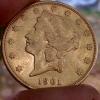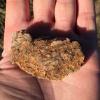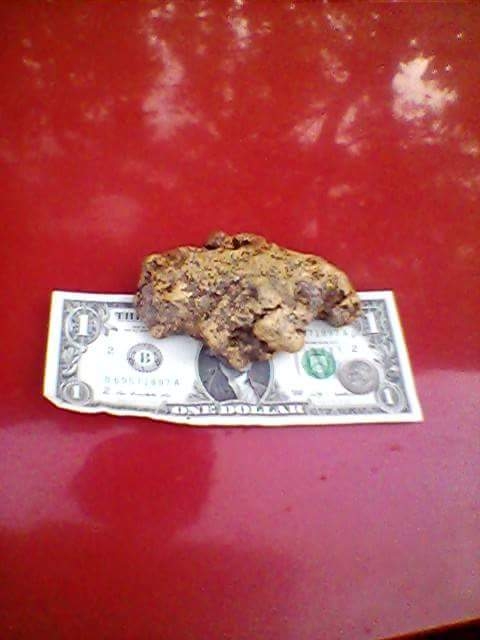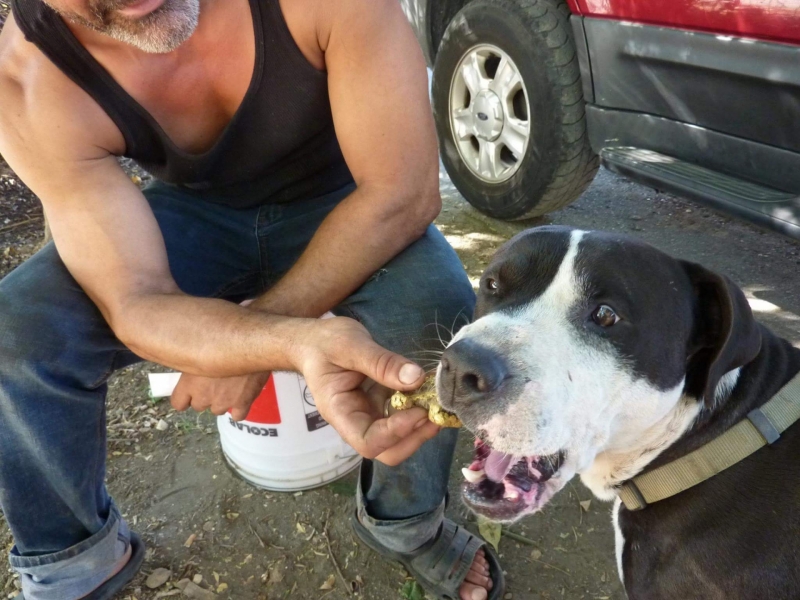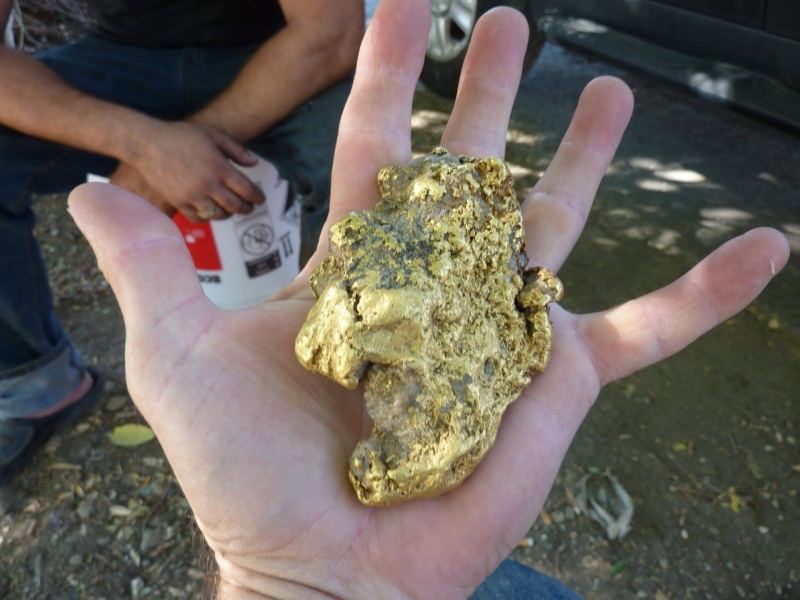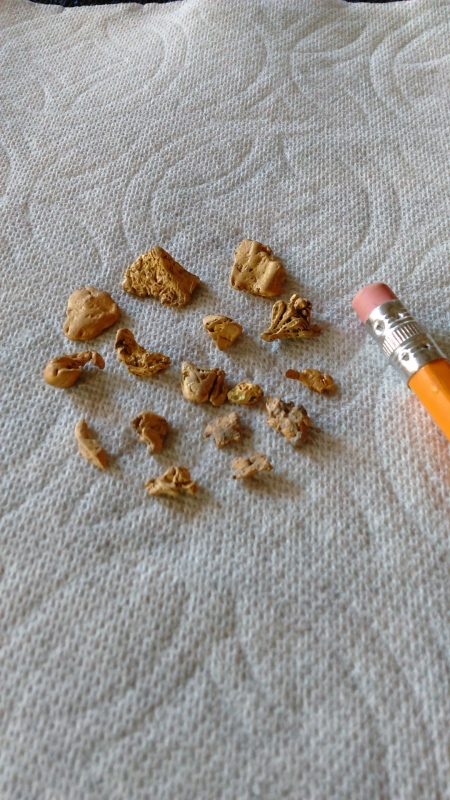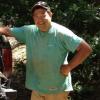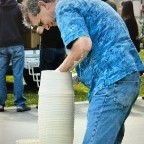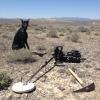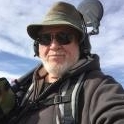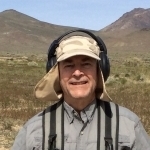Leaderboard
Popular Content
Showing content with the highest reputation on 09/02/2016 in all areas
-
NICE nugget! https://m.facebook.com/profile.php?id=157108184330085&tsid=0.8340215450152755&source=typeahead Hope the link works and most can access Facebook. I'm not one of the smart folks who can copy/convert/move the video somewhere else ;) if you can't get the video... It's an 18 ounce nugget, found by Oscar. Under a boulder on bedrock in Woods Creek, Jamestown, CA! I met Oscar a couple years back. I was prospecting Woods Creek actually, and this scrubby dude rides up on a mountain bike. No prospecting equipment, just one hell of a motor... Mouth :) He told me about his secret spot. He took his buddies there with all their gear... All he used was a screwdriver & tablespoon. He said he got more gold than they did?!? He proceeded to tell me about "xx" nugget from here, "xxx" nugget from there... Seemed like some pretty big fish stories from some "supposed prospector" riding by on a bike! so, I'm not saying all those stories were true, but this one sure seems to be!!! And he never told any stories this crazy.... Photos from same Facebook page for those that don't Facebook. Groucho the dog giving the ole miners test :)5 points
-
As you know from Lucky Lundy's post, I made it from Sunny Yuma to Sunny Rye Patch last week. First and foremost I want to extend my profound thanks and gratitude to Lundy for not only sharing his Rye Patch knowledge but allowing me to detect a couple of his secret spots. If you've ever hunted the Rye Patch you know there are miles and miles of unproductive ground and it has been hunted by thousands of detectors. There is no particular rhyme or reason to where the gold is found, it's a matter of putting in the hours to find a small patch. Lundy and friends have put in hundreds if not thousands of hours to find a few good spots. I think he'd sooner share his wife than his secret patches. Nevertheless, he was in a generous mood and I certainly appreciate the fellowship and opportunity to detect with a master. His friend Rudy rounded out the threesome and he is a bull of a detectorist. He doesn't know the word quit, detecting in the heat of the day with a wet t-shirt wrapped around his head, detecting after dark with a headlamp. He makes the most of his detecting time and makes me look like a first rate slacker. Detecting Rye Patch is a lot different than the desert at home in Yuma. Yuma is all about covering a lot of ground. The nuggets for the most part a few and far between, so I normally cover 3 or 4 miles a day. Rye Patch is all about finding a patch that's throwing small half gram minus nuggets, then slowing down and working the section to death from every angle. The one patch that was most productive was maybe 150 yds long and 75 yds wide. The were already bunches of dig holes but small nuggets were scattered next to old holes, in the sage brush and in one case on top of a chipmunk mound. The first 2 days I was only finding the bigger sitting duck nuggets and missing the small, deep and very faint targets. Lundy put me on a couple faint signals just to make sure I had the audio and settings correct to start finding them. The answer for me was slowing way way down, overlapping each swing by at least half if not a third of the coil length. Any threshold disturbance needed a scrape and in some cases 3 or 4 inches of scrape to bring the target up to a recognizable tone. Tricky business especially when I already thought I knew how to detect low and slow., The best settings were Sens at 15, HY, Normal. The insanely hot settings were not so good because it was producing too much noise to hear these faint threshold disturbances. I stuck it out a couple more days after Lundy left and did some exploring. Sawtooth sucked. I met one other detectorist from Idaho out there. Then Rabbit Hole where I found 2 nuggets in the old dozer pushes high up the hills. Way too much trash in there for me. I then explored another spot near Lundy's patch and found 4 more nuggets in a dozer push down in a long ravine. 6 days of temps in the high 80's and low 90's wore me down. I was only detecting 3 or 4 hrs a day and hating life trying to find shade. I Spent 1 whole afternoon in the shade trees at Rabbit Hole and thought it was heaven. I forgot my scale, but as of Lundy's photo I had 8 DWT and found another estimated 4 grams. So, I'm mid point between 1/4 oz and 1/2 oz of gold for 6 tough days. Not bad and I would certainly do it again, especially in better weather. I've got to send my Z in for replacement. Battery clip broke off and my screen is practically unreadable. Back to Sunny Yuma next week. Sitting it out in Sacto for a few days.2 points
-
This is not a cheap hobby and spending all that money on a GPZ 7000 just to find out you don't like metal detecting can be a tough pill to swallow. In the past your choices might have been buy a Gold Bug Pro first, use that for awhile and see if you like the hobby then upgrade to a GPX. That's what I did several years ago. But honestly these days I would recommend getting an SDC 2300 first then get a GPZ 7000 just to give yourself the best chance at finding gold. I say this from experience because I never found anything with my GBP or GPX but I did with my SDC and GPZ. But this can really vary depending on the user.2 points
-
You know when you sell a gun are a detector it's like the loss of a dear friend. I know that being I've been down that road and sorry I done it every time. Lucky for me I'm into detectors only that I can't live without. I do have some guns but I stop hunting years ago. Even when I had a farm where I could walk out my back door a shoot a deer. I got to the point I didn't want too anymore. On this XP I thinking about buying this weekend that's if I can line up a time to meet with the dealer. I don't know about this guy he works odd hours. I'm beginning to think he may be DEA Agent are a dope dealer. Yet dope dealers wouldn't be selling detectors. Unless business is bad! Chuck1 point
-
Condor, I couldn't believe, you stayed a few more days! I was deep fried. Rudy and I, had a great time detecting with you...hope our humor didn't offend, lol. I can guarantee you, you can use the same low and slow in Yuma to increase the growth of your poke. I've been up in the woods a couple times this week and it seemed like a cake walk detecting under the big pines all day vs Rye Patch death hunt! Cooler days are a page away on my Calendar...thank goodness! Until the next hunt Rick1 point
-
LOL. SL, In actual truth I am surprised at my general lack of interest in hunting since last hunting season. No doubt I will get out to hunt but I would just as soon be doing something more related to detecting or hunting Gemstones. Normally I would be getting ready for bow Muzzle-loader and gun season right now but my wife has planned a short trip for us south to Atlanta to see the Braves, A visit to Charleston SC and to Paula Deans Restaurant in Savannah Ga. After we return from there, I plan a trip west to see my daughter and her family in Bentonville Arkansas and maybe go as far as Texas and meet up with Chuck. Somewhere along the way I hope to do some Gem hunting and detecting etc for a few days.1 point
-
I am now retired with one paycheck a month which makes me think maybe I could get along with just one gun. Problem is which one? Maybe the 308 as it's pretty good all around or maybe the 30-06 as it is as well and a bit more powerful but I like my 300 Win Mag Long range rife but could I maybe just do with my 223, or even my old 7.62X54? Truth is where I live I could get by with any one of those guns but life if more interesting when there's an option or 2 or 3 or so.1 point
-
I think you will eventually end up with at least two detectors anyway so go ahead and get the 7000. Then you can worry about which vlf best suites your other needs...1 point
-
DXB...I had a similiar dilema a few years ago...I was new to detecting but decided to buy the GPX 5000 (the best at the time). I don't regret doing that-but maybe I was lucky because I had never detected- but I love it. I took the classes which came with the detector which helped immensely. Without classes, I would have really struggled. If you think you will like detecting, than I would buy the best (the 7000) but get some help on how to use it , or you may end up frustrated feeling like you wasted your money- although I think it is easier to operate than the 5000. Maybe I think that way because I have more experience now. I also bought the SDC a year after the 5000. I really like that machine also- it is lighter, and easier to use- both physically and it's simplicity. I think one way to look at this decision- if you have the money and believe that you will like the hobby than get the best. That's the path I took. I didn't want to be walking past gold with a "dated" detector. I feel that I probably found more gold for that reason. If you have trouble knowing how to operate the detector- you will walk past gold regardless. Worst case scenario, if you don't like the hobby- than you sell the machine. Of course you won't get what you paid for it, but at least you gave it 100 percent. Just my thoughts. Eric1 point
-
Condor - Nice swinging! ? Particularly in that heat. Lucky Lundy, Lunk (Keith), Steve & Chris, Gerry McMullen - a few more, are the reining masters of RP these days. Just saying that you learned about RP from one of the masters for sure.1 point
-
dxb, I think Fred is right again. METAL DETECTING is not for everyone. You have to enjoy a bit of a walkabout while at the same time paying some attention to geologic details so that you can get lucky. There can be long hours between finds that make you wonder why you are doing this metal detecting thing at all. You have to remain positive and THAT is the reason the 7000 might be the first detector you buy. Show up at a couple of gold club meetings or gold shops and use a detector a few hours first. Most shops will have something you can use for a day for under a hundred bucks. Go out with them BEFORE you buy the 7000 and if possible go to the dealer who will sell you a 7000. Those of us who own a 7000 know we are finding gold we could not find with any other detector. That is what keeps us positive now for several reasons. One reason is that we can go to previously worked gold patches and still find gold that has been missed. We all need rewards to keep us going back. A second reason is that it is an easy detector to use. Most of us used other detectors before the 7000 and we think that the machine out of the box will find gold with the best of our GPX, GB Pro and any other PI detector's settings. (We can then push it a little harder.) The third reason is that you don't want to go behind a good 7000 user with any other detector (other than a 2300 for small stuff) than another 7000. What I'm saying is that a 7000 doesn't find everything and you have to grid an area completely but once done it would probably be better to look in another location/patch if the ground has not been moved. You said you have prospected and price is not a problem. Get a 7000 with a warranty because there have been some issues that have required Minelab to replace the units. Mitchel1 point
-
I sure did not find all the gold that was left and in fact I regularly leave gold behind so no worries there! You have a super adventure in the works Paul and I wish you all the success in the world, but main thing is just be safe and have a good time.1 point
-
The learning curve for the 2300 is practically negligible. Before the 7000 I sold my GPX machine and used the 2300 nearly everyday for a year. I love that machine and if they ever find a way to add a bigger aftermarket coil I would use it again in a heartbeat. The 7000 is an awesome machine, but it has its quirks. It's noisy and loves ferrous trash. I've used the 7000 as much as 40 hrs a week and I'm still learning its language. If money is no object and you expect to prospect 20 or 30 hrs a week in decent gold producing ground, then get the 7000. If you want to dabble in detecting you'll much more likely to find small gold with the 2300. If you're near Yuma look me up and you can run both machines and experience the difference.1 point
-
Steve You are right about Lucky, If he gives you the pointy finger, you had better go slow and low, there's gold to be found there!1 point
-
Condor, Last October I put in 40 hrs of detector time on that area you mention above. Found one very small nugget. I am impressed with your results, and beyond impressed with Lucky's. I know it is more than luck.1 point
-
Well done Condor, nice collection! You must have been exhausted in the heat from doing your Happy Dance. Lucky Lundy is a generous pro.1 point
-
The answer highlights why it is apples and oranges. It depends on the mineralization. In an air test or "no mineral" ground, the AT Gold will slay an ATX if you even up the coil sizes, and get signals on small gold the ATX can't even detect. Now, turn up the mineralization dial. The higher you set it, the more depth each machine loses. But the VLF will lose depth far faster than a Ground Balancing Pulse Induction (GBPI) detector and so the ATX will catch up to and pass the AT Gold. In extreme mineralization the ATX could end up going twice as deep or deeper than the AT Gold. The small gold the AT Gold could hit in air tests that the ATX missed are now undetectable to the AT Gold also. There has always been this huge misperception about the depth difference in general between a VLF and a GBPI detector. People do air tests and wonder why they do not see this advantage people talk about. The difference is almost 100% predicated on the differences in ground mineralization encountered in the field, and this varies location to location, as does the nature of the gold itself. The inherent ground canceling capabilities of a GBPI detector are accentuated by the fact that a GBPI can put much larger coils to effective use than a VLF. This ability to snatch even tiny gold out of bad ground is well illustrated by the SDC 2300 versus any VLF. Normally a Gold Bug 2 or GMT will pull the small gold out of the ground like nothing else. In bad enough ground however a Gold Bug 2 sees its ability severely hampered, and the SDC 2300 easily punches deeper on the really small stuff. All this is why I just shake my head at air tests. They tell you virtually nothing about what to expect in gold country for real world performance. In fact the best air testers are often the most problematic in very bad ground. Air tests have value but telling you how the machines compare in the worst ground is not one of them. I have a little saying about it - "Use a VLF when you can and a PI when you must". You will know when that happens!1 point

